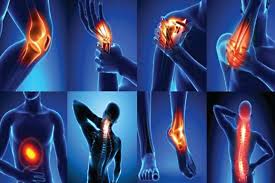
Physical and emotional pain are like a complicated jigsaw with many moving parts that come together to form a complex and multidimensional whole. While tissue damage or injury is frequently the cause of physical pain, there are many different causes of emotional misery, such as psychological trauma, stress, and bereavement. Piecing together the puzzle of pain and investigating the relationships between bodily experiences and emotional reactions are all necessary to comprehend the nuances of pain. This article explores the complex relationship between the mind and body in determining our perception of suffering, as well as the physical and emotional aspects of pain.
Physical Pain: The Alarm System of the Body
The body uses physical pain as an alarm system, warning us of impending danger and triggering defense mechanisms to stop additional damage. Specialized sensory receptors known as nociceptors recognize unpleasant stimuli when tissue damage or injury occurs. They then send signals to the brain, where they are processed and understood as pain.
Physical pain is a sensory experience that involves multiple sensory dimensions, such as intensity, location, duration, and quality. Acute pain is usually severe, localized, and has a short duration. It is usually caused by tissue damage or injury. On the other hand, dull, persistent pain that varies over time and is not as obviously associated with tissue damage might be experienced as chronic pain.
Emotional Anguish: The Mental Aspect of Pain
Emotional anguish is a vast array of psychological and affective experiences, whereas physical pain is mostly linked to sensory impressions and physiological reactions. Emotional distress can be caused by a number of things, such as psychological trauma, stress, loss, or interpersonal conflict. It might show itself as feelings of melancholy, worry, rage, fear, or helplessness.
Emotional anguish is a very personal experience that varies greatly from person to person. While some people may find it difficult to handle even small stresses, others may be more resilient in the face of hardship. Genetic, biochemical, psychological, and environmental elements interact in a complicated way to affect how we perceive and handle emotional pain.
The Relationship Between Pain, Both Physical and Emotional
An tight feedback loop exists between physical and mental suffering, with each impacting and intensifying the other. Prolonged physical discomfort can negatively impact one’s mental state, resulting in emotions such as annoyance, despondency, unease, and social seclusion. Likewise, unresolved emotional anxiety can worsen the symptoms of physical pain and obstruct the process of rehabilitation.
The stress response system is one of the main processes that underlie the relationship between physical and emotional discomfort. The sympathetic nervous system is activated when the body senses danger or pain, which leads to the release of stress hormones like cortisol and adrenaline. These hormones have the ability to intensify pain signals, increase pain sensitivity, and worsen bodily discomfort.
Coping Techniques for Handling Both Mental and Physical Pain
Mindfulness and Relaxation Techniques
Progressive muscle relaxation, deep breathing exercises, and mindfulness meditation can all help lower stress levels, encourage relaxation, and ease the symptoms of both mental and physical discomfort.
Cognitive-Behavioral Therapy (CBT
CBT is a type of psychotherapy that assists patients in recognizing and disputing harmful thought patterns as well as creating more flexible pain-management coping mechanisms. Through altering their perspective on and reaction to pain, people can lessen their suffering and enhance their quality of life.
Social Support Networks
Asking friends, family, and support groups for help can be a great way to get emotional affirmation, motivation, and useful coping mechanisms. People who are part of social support networks may feel less alone, more understood, and more capable of managing their symptoms.
Physical Activity and Exercise
Engaging in regular exercise and physical activity can help lower the intensity of pain, increase flexibility and mobility, and improve general physical and mental health. Walking, swimming, and yoga are examples of low-impact activities that are very helpful for those with chronic pain.
The Pain Dilemma: Analyzing the Variations Between Emotional and Physical Pain
Emotional or bodily pain is a multidimensional, intricate experience that is difficult to define. Emotional and physical pain weave together in the complex fabric of human suffering, producing a maze of feelings, reactions, and experiences that defies our comprehension of misery. y.
Emotional Pain: The Pain That Is Not Visible
Emotional distress, sometimes called psychological or mental pain, is a spectrum of emotional and psychological misery that is subjective and very individualized. It can be brought on by a number of things, such as trauma, loss, rejection, or an existential crisis. It might show itself as emotions of melancholy, anxiety, despair, loneliness, or hopelessness. In contrast to physical pain,, making it challenging to recognize and treat.
Emotional distress is not just a fleeting feeling; rather, it is a deep and permanent experience that can affect all facets of a person’s life. Relationships, employment, and day-to-day functioning may all be hampered, which could result in social disengagement, loneliness, and a lower standard of living. Resilience, self-compassion, social support, and, in extreme situations, professional intervention are necessary for coping with emotional distress.
Physical Pain: The Siren of the Body
In contrast, physical distress is a palpable and frequently instantaneous feeling that results from bodily harm or tissue damage. Depending on the damage and underlying cause, it may present as a slow, throbbing pain, a sharp, stabbing pain, or a chronic, ongoing aching. Physical pain may be easily observed and measured, which makes it simpler to diagnose and cure than emotional suffering.
The body uses physical pain as a siren to warn us of impending danger and to trigger defense mechanisms that stop additional harm. It is characterized by emotional responses like fear, worry, and distress as well as physiological alterations including elevated heart rate, sweating, and tense muscles. Using a mix of pain management strategies, such as medicine, physical therapy, and lifestyle changes, is common when dealing with physical suffering.
The Relationship Between Physical and Emotional Pain
Even though physical and emotional suffering may appear to be separate, they are actually closely related, with each amplifying and impacting the other in a sophisticated feedback loop. Prolonged physical discomfort can negatively impact one’s mental state, resulting in emotions such as annoyance, despondency, and unease. On the other hand, unresolved emotional distress can worsen the symptoms of physical pain and obstruct the healing and recovery process.
Final Thoughts
The phenomena of pain is intricate and multidimensional, involving both emotional and physical aspects. Piecing together the puzzle of pain and investigating the relationships between bodily experiences and emotional reactions are all necessary to comprehend the nuances of pain. People can better manage their overall quality of life and overcome the difficulties of distress by acknowledging the connection between physical and mental suffering, creating efficient coping mechanisms, and encouraging resilience and adaptation. In the end, by delving into the nuances of both physical and psychological suffering, we may comprehend the complicated puzzle of discomfort better and create more compassionate, all-encompassing methods of treating and recovering from it.








